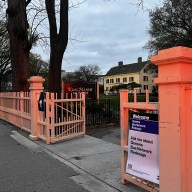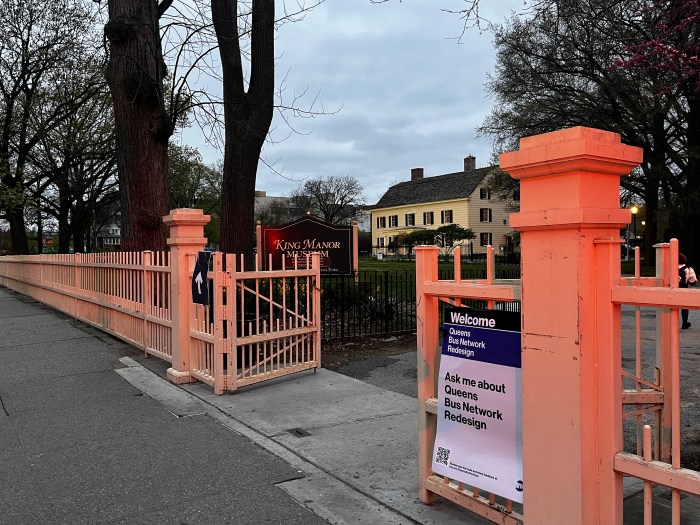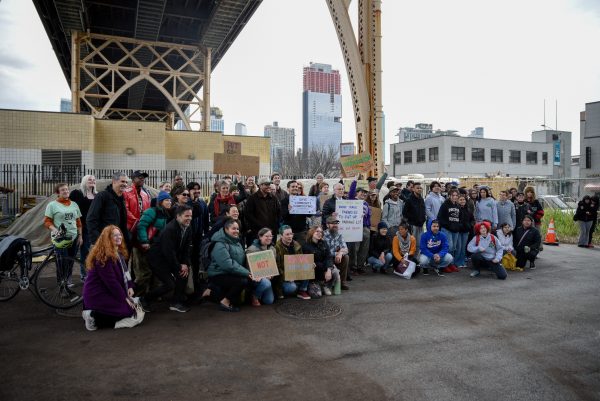With the 45th anniversary of the 1964 World’s Fair on April 21, many resisdents enjoying Flushing Meadows-Corona Park may not realize the history that surrounds them.
Although some steps have been taken to preserve this piece of Queens history, some feel that more needs to be done.
Queens can be sure that the Unisphere will be around for many years to come, since it has been landmarked.
“It’s still very symbolic of our borough because it’s the world and we’re the most multi-ethnic country in the world,” Borough President Helen Marshall said. “When you come to Queens you really do see the whole world.”
In making the decision to preserve the Unisphere, in a report the Landmarks Preservation Commission said, “On the basis of careful consideration of the history, the architecture, and other features of this structure, the Landmarks Preservation Commission finds that the Unisphere with its surrounding pool and fountains has a special character, special historical and aesthetic interest and value as part of the development, heritage and cultural characteristics of New York City.”
Queens Parks Commissioner Dorothy Lewandowski said that, around the Unisphere, there have been many landscape and other improvements. She also said that funding from Marshall and Mayor Michael Bloomberg will enable upgrades to be done on it, such as repairing fountain leaks and improving water pumping.
Through what she described as generous funding from Marshall and Councilmember James Gennaro, Lewandowski also said that the boathouse along Meadow Lake will be renovated. Built originally for the 1939 World’s Fair, it too was used in the fair in ’64.
The future of another former fair structure is not as certain — the New York State Pavilion and its watchtowers that were made famous to new generations in the hit movie “Men in Black.” Although it remains standing, the building shows many obvious signs of wear and tear.
“I’m sorry about the New York State Pavilion because it just doesn’t seem safe,” Marshall said. “We would all like it restored, but we’ve got to be sure it’s safe.”
Bill Cotter, the co-author of two books on the 1964 World’s Fair, recalls seeing the pavilion used as a place to store garbage while he was in college and said that it is a shame what has happened to the building.
“It’s real sad to see it rusted and decaying,” he said. “That building needs an awful lot of work. I’d hate to see it being taken down.”
Lewandowski said that last year some emergency stabilization work was done on the structure. During the winter, with the help of funding from Unisphere, Inc., Lewandowski said a study of the Pavilion was conducted. The Parks Department is currently analyzing the data. Lewandowski said that the Department will meet to discuss the study and determine what should be done with the Pavilion.
Many of the facilities that are housed in former fair buildings have different ways of keeping the history alive. For instance, at Terrace on the Park, which housed the Port Authority – helicopter and all at the fair– there is today a wall of World’s Fair mementos. The NY Hall of Science also has a small exhibit paying tribute to the fair.
The Queens Museum of Art holds a major part of fair history – the New York City Panorama. Built specifically for the fair, the Panorama is a scale model of the city that is 9,335-square-feet in size.
“It’s the world’s largest architectural scale model,” said museum Executive Director Tom Finkelpearl. “It’s so interesting to people because people are interested in New York City. New York City is fascinating to people.”
Finkelpearl also said that he thinks the Panorama is one of the greatest things the fair has left behind. For the first time since 1992, the model was updated recently when Shea Stadium was taken out and replaced with Citi Field. The Museum has now started an “adopt-a-building” program to be able to further update it.
The Queens Museum of Art is also home to other 1964 World’s Fair memorabilia as part of a long-term exhibition. Other ways that the Museum has been active in preserving the memory of the fair is through other exhibitions, publishing books and special events.
“There are so many relics of it [the fair] in the park so it’s an interesting thing for people to view,” Lewandowski said.
She said that people are able to see what was on the grounds while also looking to the future. While there is much going on in Flushing Meadows-Corona Park that focuses on the future, Lewandowski said that it is also important to remember what was there.


































